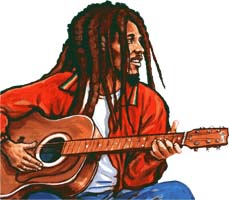 “I love the freedom of writing fiction. Still, to be believable, fiction has to be grounded in some reality.”
“I love the freedom of writing fiction. Still, to be believable, fiction has to be grounded in some reality.”
Category Archives: Book News
Remembering Armando
The theme of the week is back to school. When we acquired, Armando and the Blue Tarp School in 2006, it was one of those moments when you are simply in awe of certain individuals and the good work they do in the world.

Seeing Stars
Just got word that The East-West House, Christy Hale’s biography of Isamu Noguchi, earned a star from the not-easily-impressed Kirkus Reviews! Thanks, Kirkus!
The review says, “Hale’s striking illustrations and the book’s elegant look are an homage to the Japanese landscape.” Can’t resist posting two of my favorites:
A New Season Awaits!
Boys Read I and I Bob Marley
 And they like it!
And they like it!
A great review of I and I Bob Marley was written by John Martin on the Boys Read blog, plus some nice words from I and I Bob Marley illustrator, Jesse Joshua Watson.
June’s Top 10 Bestsellers
You know you’re jealous of all the people who bought these awesome books — and you know what to do about that, don’t you?
June’s Top 10 Books on leeandlow.com
A Starred Review for Bob
I and I Bob Marley received a starred review from Booklist magazine. The review calls I and I “[A] rare, soulful tribute.”
Paterson Prize for Books for Young People
Winners Abound!
Winner in the Grades 4-6 category:
Bird by Zetta Elliott, illustrated by Shadra Strickland
Make Your Own Sushi
For a great cooking adventure, pair Hiromi’s Hands and this delicious activity.
Create a Father’s Day Card for Dad
For a fun craft project, pair In Daddy’s Arms I Am Tall with this activity to make the best card Dad has ever received.



